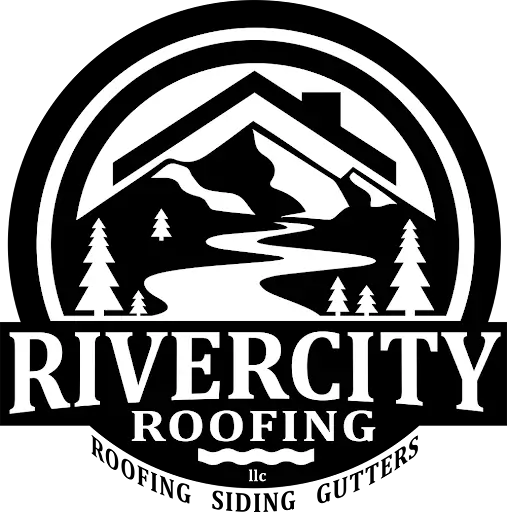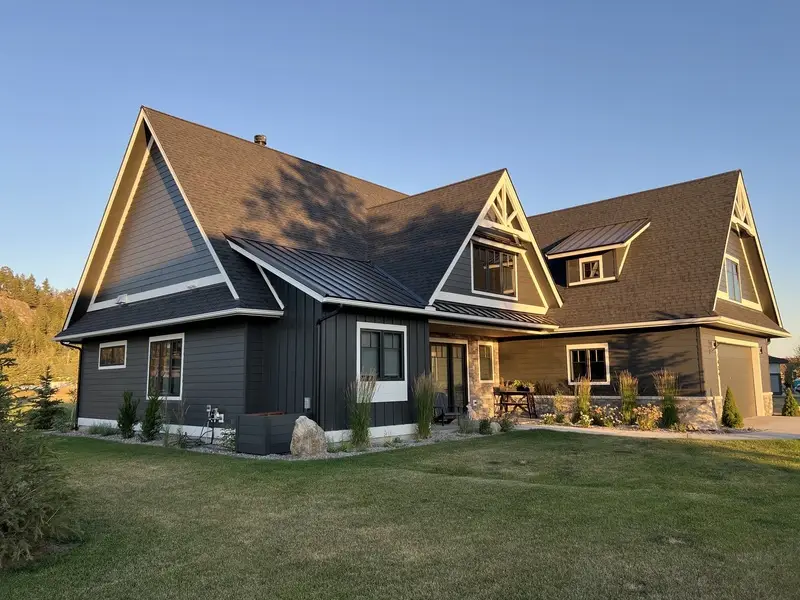In the realm of home improvement and maintenance, the decision to lay new shingles over old ones can be both economical and practical. Asphalt shingles are a common roofing material, and understanding their relevance to roofing over existing shingles is essential. Exploring the pros and cons of roofing over existing shingles is crucial for homeowners considering this option. It offers insights into efficiency, cost-effectiveness, and potential limitations. Roofing materials play a significant role in a home’s durability, protection, and aesthetic appeal. Therefore, understanding these factors is integral in making an informed decision that aligns with long-term property maintenance goals and budget considerations.
This article provides a comprehensive analysis of the pros and cons of roofing over existing shingles, including an examination of roofing materials, the importance of roof inspection, and best practices for roof maintenance. It delves into the technical and practical aspects of roofing over old shingles, weighing the benefits of enhanced protection and cost savings against potential drawbacks like added weight and concealed damage. Whether considering shingle over existing roof solutions or evaluating the broader implications of roofing over existing shingles, this guide outlines essential considerations before making a final decision, aiming to equip homeowners with expert insights for making informed roofing choices.
Pros of Roofing Over Existing Shingles
One of the primary advantages of a roof overlay, or roofing over existing shingles, is the potential for significant cost savings. By avoiding the removal of old shingles, homeowners can eliminate labor and disposal fees typically associated with a full roof replacement. This streamlined process not only reduces the overall expenses but also diminishes the need for additional materials, contributing to environmental conservation.
Cost Savings
Homeowners can save approximately 15% on total residential roofing costs by opting to overlay new shingles over old ones instead of opting for a complete roof replacement. This translates into savings of about $1 per square foot of roof, which can accumulate to substantial amounts depending on the roof size.
Reduced Installation Time
Roofing over existing shingles simplifies the installation process, making it quicker and less labor-intensive. Since the step of a complete tear off of old shingles is skipped, the roofing crew can immediately begin laying the new shingles. This efficiency reduces the overall job site time by about 30%, allowing for faster project completion.
Less Waste
Choosing to overlay shingles directly contributes to reducing waste. This approach prevents the accumulation of old shingles in landfills, aligning with more environmentally friendly practices. By not removing the old layer, homeowners partake in a more sustainable roofing method.
Less Mess
Overlaying shingles creates less disruption and mess around the property. Traditional tear-off processes can be quite messy, involving significant debris and potential damage to landscaping. With an overlay, these concerns are minimized, providing a cleaner and more manageable working environment.
Use of Existing Flashings
In many cases, existing flashings, such as drip edges, vent flashings, and step flashings, can be reused if they are in good condition. This not only saves on material costs but also reduces the time spent on installation. Reusing sound flashings is a practical approach, provided they align with the new shingles in terms of size and condition.
By considering these pros, homeowners can make informed decisions about whether roofing over existing shingles is the best option for their specific needs and circumstances.
Cons of Roofing Over Existing Shingles
Reduced Lifespan
Roofing over existing shingles can significantly shorten the lifespan of the new roof, especially if the old roof has leaks, is in bad shape, or has underlying structural issues. The old shingles may not provide a stable or even surface, leading to quicker deterioration due to trapped heat and lack of proper ventilation. This results in the new shingles wearing out faster than if they were installed on a clean deck.
Hidden Costs
While initially seeming cost-effective, roofing over existing shingles can lead to hidden expenses. Issues with the underlying roof deck, such as rot or damage, often remain undetected until serious problems arise, necessitating costly repairs. Additionally, any future roof replacement will require removing multiple layers, increasing labor and disposal costs.
Inability to Inspect Roof Decking
One significant disadvantage is the inability to inspect the roof decking underneath the existing shingles. This inspection is crucial as it helps identify any damage or issues that need repair to ensure the longevity and effectiveness of the new roof. Skipping this step can lead to structural problems and potential leaks that remain hidden until they cause more severe damage.
Increased Weight from Roof Overlay
Adding a new layer of shingles increases the total weight of the building’s structure, impacting the roof’s structure. This additional weight can stress the roof framing and decking, potentially leading to structural issues or even collapse, especially in areas with heavy snowfall or severe weather conditions.
Compatibility Issues
There are also compatibility concerns between the new and old roofing materials. The new shingles may not perform as expected if they are not compatible with the layer beneath, leading to improper installation and reduced effectiveness. This can affect everything from weather resistance to aesthetic appearance, impacting the overall performance and lifespan of the roof.
Best Practices for Roofing Over Existing Shingles
When considering roofing over existing shingles, it is crucial to adhere to best practices to ensure the longevity and effectiveness of the new roof. Here are some key strategies to follow:
Proper Shingle Installation
Proper roof installation also is paramount to avoid issues such as bulk at the bottom of the roof. It’s advised to cut back the first tab to create a smoother transition and use 1.75-inch roofing nails for better hold, compared to the standard 1.25-inch. This ensures the shingles are securely attached and lie flat, providing a uniform appearance and reducing the risk of uplift in windy conditions.
Use of New Flashings
Flashings are critical in preventing water ingress at the roof’s vulnerable points, such as edges, valleys, and penetrations. For a roofing-over project, it’s best to install new flashings, including special drip-edge flashings designed for reroofing. This helps maintain a tight seal and extends the roof’s life. Cutting and face-nailing a new drip edge to the fascia ensures that all gaps are properly sealed.
Ensuring a Flat Surface
To achieve a flat surface, especially along the eaves, it might be necessary to rip down the height of the first two courses of existing shingles. This adjustment allows the new shingles to lay flat and align correctly without gaps larger than 1/2 inch, which can prevent proper sealing and lead to leaks.
Proper Waterproofing
Ensuring that nails and gutter aprons are not placed near seams is crucial for effective waterproofing. This placement helps prevent water from seeping through nail holes or gaps, which is essential for maintaining the roof’s integrity and avoiding moisture-related damage.
Professional Inspection
Before proceeding with roofing over existing shingles, a professional inspection is indispensable. This evaluation helps identify any underlying issues such as rot, mold, or structural weaknesses that need to be addressed. Ensuring that the existing roof is in good condition before overlaying new shingles can prevent future problems and additional costs.
By following these best practices, homeowners and contractors can effectively manage roofing over existing shingles, ensuring a durable and reliable roofing system.
Considerations Before Deciding
Condition of Existing Shingles
Before deciding to roof over existing shingles, it is essential to assess their condition. If the existing shingles are near the end of their lifespan, show extensive damage, or have significant curling or loss of granules, a complete replacement is advisable to achieve a brand-new roof. Additionally, signs of leaks or water damage in the attic indicate that the underlying structure may also require attention, which could affect the decision to overlay new shingles.
Local Building Codes
Local building codes play a crucial role in determining whether an additional layer of shingles can be installed. Homeowners must confirm that local codes permit the installation of an extra layer and that the structure beneath the roof deck can support the additional weight. It’s also important to check if the existing roof has the maximum allowed layers of shingles, as this could influence the feasibility of adding another layer.
Warranty Implications
The decision to overlay shingles should consider the potential impact on warranties. Some manufacturers may offer limited or no warranty for shingles installed over existing ones. Furthermore, improper installation can void warranties, emphasizing the need for professional assessment and adherence to manufacturer guidelines to maintain warranty protection.
Future Repair Costs
While roofing over existing shingles might offer immediate cost savings, it is important to consider potential future costs. If underlying issues are not addressed, they could lead to more extensive and expensive repairs later. Additionally, if problems arise, removing multiple layers of shingles will be more costly than dealing with a single layer.
Type of New Shingles
Choosing the right type of shingles, including whether to install a metal roof, is critical for both performance and cost-effectiveness. Homeowners should consider the weight, durability, and compatibility of new shingles with the existing layer. For instance, heavier materials like architectural shingles may not be suitable for layering over older, lighter shingles. Additionally, selecting shingles that align with local building codes and homeowner association rules is essential for compliance and satisfaction.
Conclusion
As we conclude our blog on Pros and Cons of Roofing Over Existing Shingles, the decision to roof over existing shingles is a complex one that requires careful consideration of various factors. While there are definite advantages in terms of cost savings and environmental benefits, homeowners must also be aware of potential drawbacks such as reduced lifespan and structural concerns.
By weighing these pros and cons alongside expert insights, individuals can make a well-informed choice of roofing contractor that aligns with their property maintenance goals. It is crucial to thoroughly assess the condition of the current shingles, understand local regulations, and consider long-term repair costs before embarking on any roofing project. With a comprehensive understanding of all aspects involved, homeowners can ensure the durability, protection, and aesthetic appeal of their roofs for years to come.


